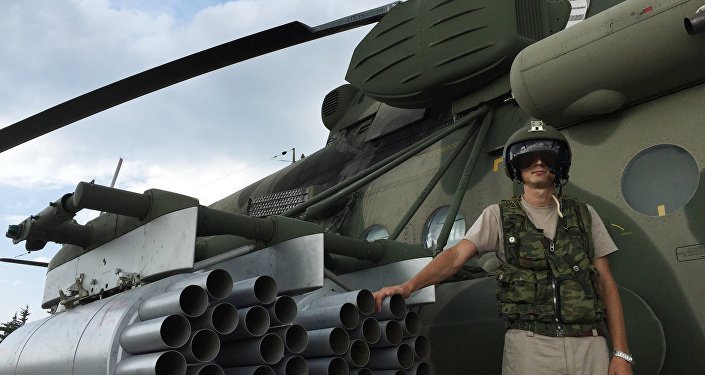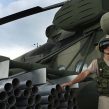
Russia’s Application of Military Power in Syria
Publication: Eurasia Daily Monitor Volume: 13 Issue: 41
By:

Moscow’s use of military power in Syria differs from its pursuit of warfare in Georgia in August 2008, or more recently in Ukraine. This appears to be confirmed by a comparison of the force sizes deployed in Georgia and Syria, as well as the use versus avoidance of ground forces in the two conflicts. Commentaries by Russian military specialists and theorists present a nuanced picture, rooted in the state’s long-known interest in asymmetric warfare, or integrating various forces drawn together across the power ministries and its efforts to combine high-technology-centered combat with more traditional themes (Vedomosti, February 23).
Russia’s sledgehammer approach to military conflict has been relegated to the past. Although Russian operational-strategic, joint military exercises or “snap inspections” of its Armed Forces focus on regional or large-scale conflict, the caveat is that the levels of force applied are comparatively small and asymmetric—an observation consistent with the use of armed force in Donbas (See: Russia’s Zapad 2013 Military Exercise: Lessons for Baltic Regional Security, The Jamestown Foundation, December 28, 2015; Brothers Disunited: Russia’s Use of Military Power in Ukraine, FMSO, April 2015). Consequently, Russia’s military operations in Syria—encompassing several types—are, in essence, about applying asymmetric warfare approaches: testing and rehearsing the use of limited military power to rebalance vis-à-vis a stronger opponent (see EDM, February 23).
Moscow’s assessment of the complexity of the operational environment in Syria guided and shaped the type, role and parameters of its military intervention—which was also a guiding factor in Donbas. The Syrian operational environment was already complex by the summer of 2015, when Russia’s General Staff planning reached its crescendo and the Kremlin authorized air operations; a critical factor in this assessment and efforts to shore up the Bashar al-Assad regime was how close the Syrian Arab Army (SAA) was to collapse. With an international coalition conducting targeted air strikes against the Islamic State, combined with rebel and terrorist activity on the ground, Civil War raging across the country, and with Moscow’s seeming isolation from global powers, the situation seemed tough at the outset. Throughout the campaign itself, the operational environment continued to remain fluid, with the added complexity of a rift with Turkey as well as Ankara and Riyadh threatening land-based intervention in Syria. Moscow judged that the SAA was weak and consigned to the role of underdog in the fight with rebel forces, compelling a limited and asymmetric use of military force to change the balance. This was most striking in the successes around Aleppo, which were accompanied by an upsurge in international diplomatic activity geared toward finding ways to limit or eventually end the conflict (Voyenno Promyshlennyy Kuryer, February 24).
In terms of the prosecution of the campaign in Syria, the Russian Armed Forces conducted several inter-related operations to achieve limited war aims by asymmetric means. The Aerospace Forces (Vozdushno Kosmicheskikh Sil—VKS) have targeted enemy forces using air power to degrade infrastructure, manpower and supplies. Moreover, Russia supported the SAA in its ground operations against rebel forces, provided air-defense protection for Syria’s deployed forces, sustained Syrian government forces through effective use of air and sea lines of communication, led a train-and-equip program to bolster SAA capabilities, deployed and tested modern assets and weapons systems, including Anti-Access/Area Denial (A2/AD), experimented with information warfare, and maintained escalation dominance. Moscow has also highlighted inconsistencies in Ankara’s position on ISIS or Syrian rebel groups to exploit potential divisions within NATO (Voyenno Promyshlennyy Kuryer, February 24). The Kremlin learned from Donbas that limited force applied in a local setting can yield diplomatically exploitable leverage; even the use of unmanned aerial vehicles (UAV) in eastern Ukraine in conjunction with artillery systems has resurfaced in Syria.
One commentary in Nezavisimoye Voyennoye Obozreniye characterizes Russia’s joint actions in Syria along with the SAA and supporting militias as alternative or asymmetric war. This is based on an imbalance of forces resulting from SAA degradation and its inherent weaknesses, especially in combat training. But the author extends this asymmetry to include the VKS campaign. The VKS used its best pilots to perform the tasks of army and tactical aviation—mainly drawing on older aircraft and dated unguided munitions with minimum loads. Precision strikes using precision-guided munitions (PGM) are in the minority. Thus, Russia exploits a mix of old and modern aircraft together with the near-complete domination of Syrian airspace to aid the SAA in asymmetric operations. What is striking is how limited Russia’s military intervention has proved. Among criticism of the air operations was the absence of sufficient support for the Su-24M bomber downed by the Turkish Air Force, as well as the lack of sniper pairs to target and degrade enemy forces in an urban environment. The author asks why the Turkish or Saudi Arabian militaries might believe they possess sufficient capabilities to achieve their aims by mounting an intervention (Nezavisimoye Voyennoye Obozreniye, February 19).
It is unsurprising in this context, that Russia’s greatest military theorist, Army-General (retired) Makhmut Gareev, should offer his perspectives on modern warfare, calling for closing the gap between theory and practice. Gareev returns to a familiar theme, arguing that war is the best way to train an army. Framing his arguments with reference to the Great Patriotic War, in his normal style, Gareev reasserts the notion that Russia’s security is best achieved through the unity of the army and society. He offers opinions on government campaigns to promote patriotism in the nation’s youth before turning to outline threats to Russia. Gareev notes in passing that the United States seems to portray Russia as its main enemy. He briefly considers high-technology developments in modern warfare, admitting they play an important role, including automated command and control, UAVs, as well as weapons based on “new physical principles.” Additionally, he says his Academy of Military Sciences has a role to play in exploring these. But in his view, the tank is not redundant in modern war (Voyenno Promyshlennyy Kuryer, February 24).
Gareev represents the traditionalists within the Russian military, but heads an institution that also contributes to an understanding of modern and future warfare, even assisting with innovation. He advocates creating a ministry for the defense industry and says modern threats require countering using “political, diplomatic, economic, information, technological, psychological and other spheres,” demanding a cross-agency approach under General Staff leadership (Voyenno Promyshlennyy Kuryer, February 24). Although such contradictions offer little clarity for the future, it is apparent that Russia’s actual use of military power Ukraine and Syria is not about using overwhelming force.




